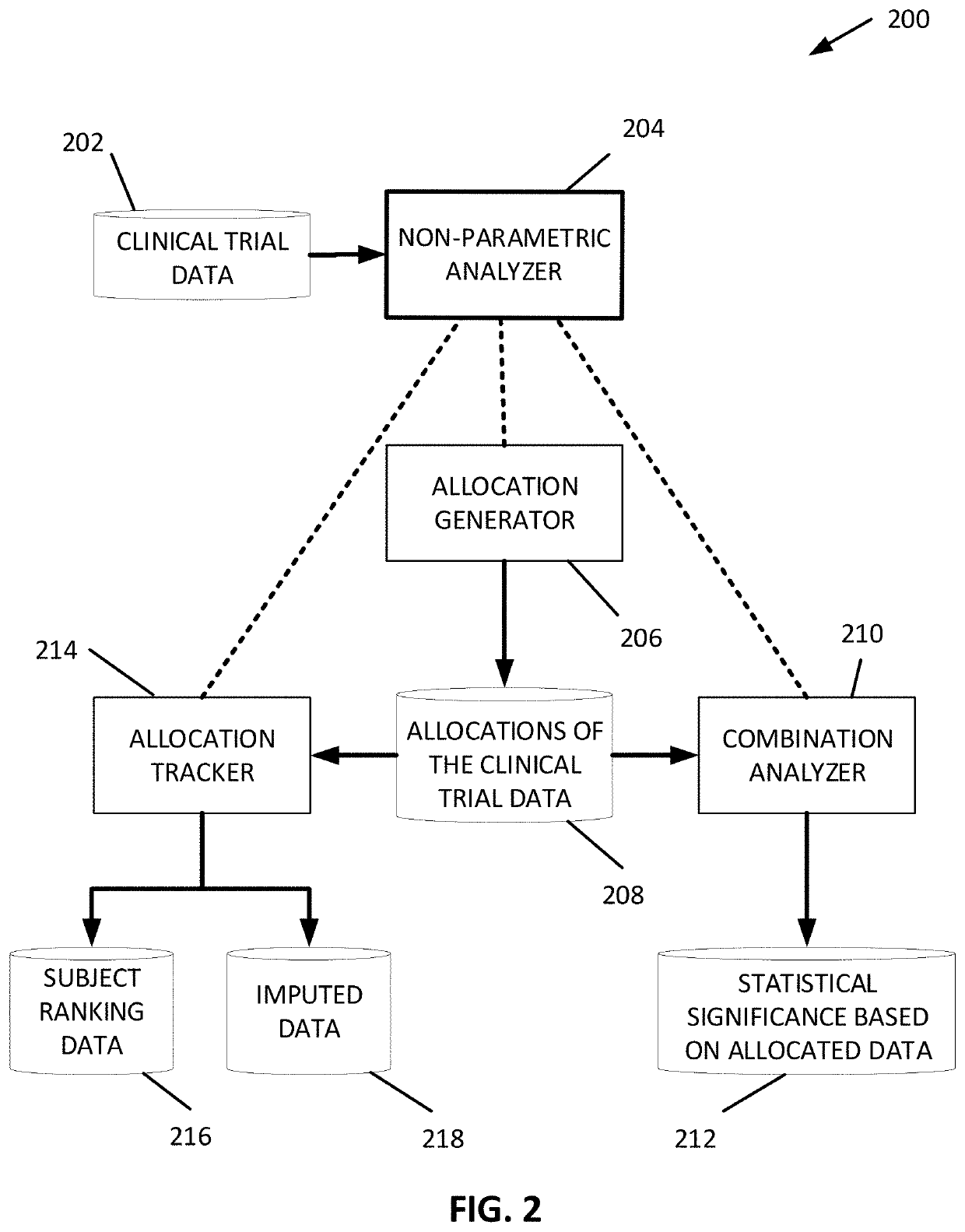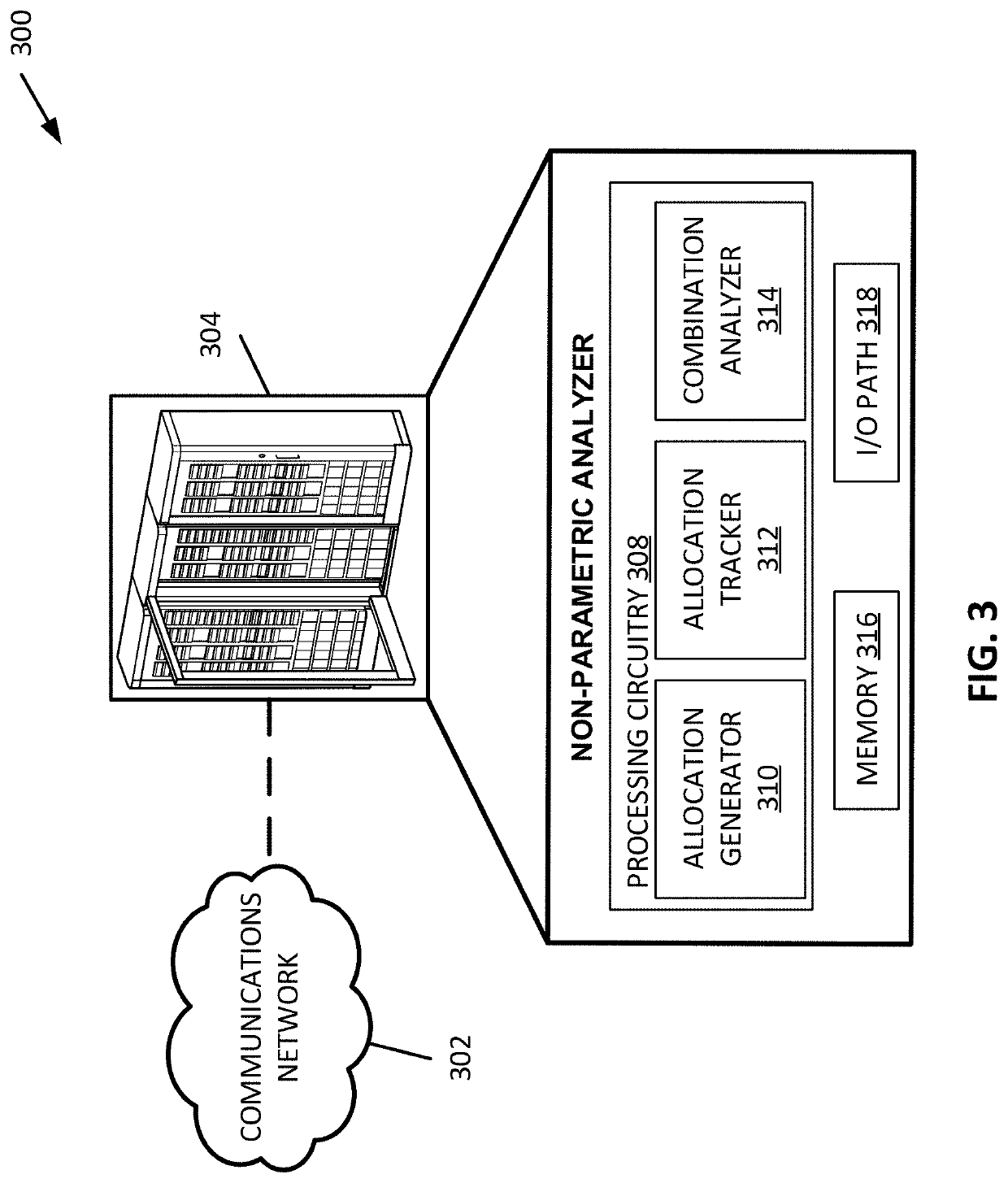Randomization honoring methods to assess the significance of interventions on outcomes in disorders
a randomization and intervention technology, applied in the field of clinical data analysis, can solve the problems of subsequent trials failing and mistaken abandoning development, and the risk of ineffective treatments being mistakenly believed to be effective and brought to market, so as to reduce the size of a first clinical trial or increase the effect of the siz
- Summary
- Abstract
- Description
- Claims
- Application Information
AI Technical Summary
Benefits of technology
Problems solved by technology
Method used
Image
Examples
embodiment 1
2. The method of embodiment 1, wherein the multiple treatment allocations are generated at random without constraints or balancing criteria.
3. The method of embodiment 1, wherein, for each multiple treatment allocation, a probability for a subject being reorganized into a group of the further pluralities of groups is comparable to a probability of the subject having been organized into a group of the plurality of groups based on the treatments or the treatment levels.
4. The method of embodiment 1, wherein the subjects are reorganized to generate the further pluralities of groups while maintaining group sizes appropriate for assessing the efficacy and safety of treatments based on the received clinical trial data.
5. The method of embodiment 1, wherein each of the multiple treatment allocations is generated using a randomization protocol.
6. The method of embodiment 1, wherein the randomization protocol honors the randomization design of the clinical trial.
7. The method of embodiment 1...
embodiment 7
8. The method of embodiment 7, wherein the preselected criteria match at least some of criteria from a randomization protocol used for organizing the data structure into the plurality of groups except for the treatment level or a treatment intensity and at least one of a temporal sequence.
9. The method of embodiment 7, wherein the preselected criteria are criteria from a randomization protocol used for organizing the data structure into the plurality of groups except for the treatment level or a treatment intensity and at least one of a temporal sequence.
10. The method of embodiment 7, wherein the preselected criteria comprise, for each of the groups, one or more of a group size, a demographic distribution, gender, age, or ethnicity.
embodiment 10
11. The method of embodiment 10, wherein the group size matches the size of each of the plurality of groups based on the treatment levels.
12. The method of embodiment 1, wherein the clinical trial data corresponding to each subject in each group of the plurality of groups depends only on the treatment level of the each group for which the each subject is assigned.
13. The method of embodiment 1, wherein assessing the efficacy and safety of the agent, composition, treatment, or combination based on the clinical trial data does not include distributional assumptions that characterize a parametric approach.
14. The method of embodiment 1, wherein the clinical trial data comprise ordinal data corresponding to each of the subjects, and wherein generating the multiple treatment allocations enables addressing the ordinal data when assessing the efficacy and safety of the agent, composition, treatment, or combination based on the clinical trial data.
15. The method of embodiment 1, further com...
PUM
 Login to View More
Login to View More Abstract
Description
Claims
Application Information
 Login to View More
Login to View More - R&D
- Intellectual Property
- Life Sciences
- Materials
- Tech Scout
- Unparalleled Data Quality
- Higher Quality Content
- 60% Fewer Hallucinations
Browse by: Latest US Patents, China's latest patents, Technical Efficacy Thesaurus, Application Domain, Technology Topic, Popular Technical Reports.
© 2025 PatSnap. All rights reserved.Legal|Privacy policy|Modern Slavery Act Transparency Statement|Sitemap|About US| Contact US: help@patsnap.com



